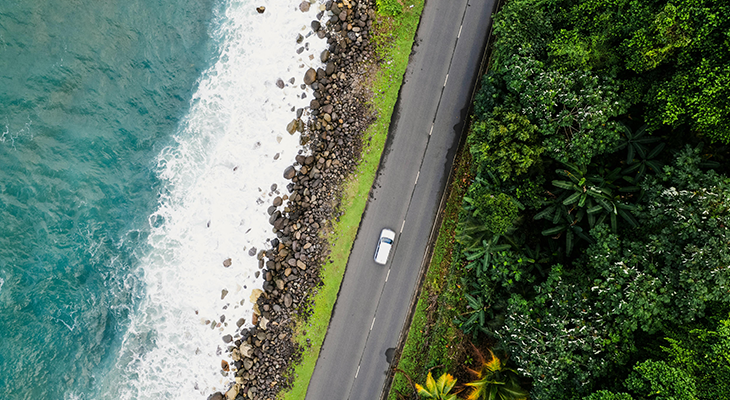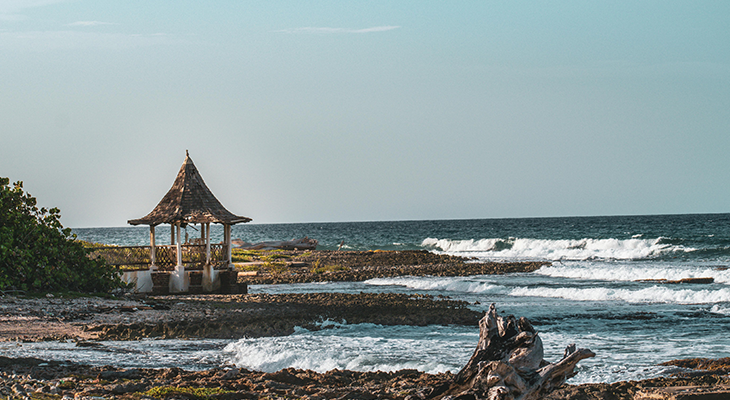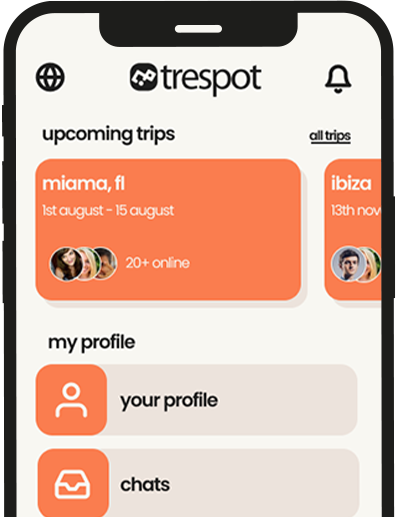Best Time of Year to Visit Jamaica (Weather & Deals)
Plan the best time of year to visit Jamaica with our data-led guide: dry vs wet season, hurricane risk, prices & crowds, sea temperatures, regional microclimates, and festival dates—so you pick the perfect month for your beach, culture, or adventure trip.

Introduction: How to choose your month
Sun‑bright beaches, rainforest peaks, endless music—Jamaica delivers tropical energy year‑round. But the best time of year to visit Jamaica depends on how you balance weather, crowds, and cost. Peak months (mid‑December to mid‑April) bring sunshine and low humidity—and higher prices. Shoulder months like November to mid‑December or late April to May can blend pleasant weather with better rates. Summer is warm and lively, while September–October lines up with the Atlantic hurricane peak, trading risk for rock‑bottom deals.
In this guide, we combine official climate data with event calendars to help you pick the right month for your style—whether that’s beach‑first Negril, waterfall‑rich Ocho Rios, culture‑forward Kingston, or the wild‑green east around Port Antonio. We’ll map out dry vs wet seasons, sea temperatures, festival beats (Carnival in April, Reggae Sumfest in July), and where to save the most on flights and hotels—so your Jamaica plans are as smooth as a riverside raft ride.
1) How to Decide Your Best Time
Balance triangle: weather × crowds × cost
Think of timing as a triangle: sun & low rain (dry season), lower prices (shoulder/low season), and space (fewer crowds). You can optimize two, sometimes three, but rarely all. November to mid‑December often hits a sweet spot (good weather before peak pricing), while late April–May catches post‑Easter dips.
North‑coast vs south‑coast nuance
Jamaica’s north and west coasts (Montego Bay, Negril, Ocho Rios, Port Antonio) see popular beach weather most of the year, with October typically the rainiest month. Kingston/Blue Mountains trend warmer inland and cooler at elevation—great for coffee farm visits and hiking in dry‑season months.

2) Jamaica Weather 101 (Dry vs Wet Seasons)
Dry season: December–May
Expect abundant sunshine, lower rainfall, and comfortable humidity—especially February–April, a sunshine peak noted by the UK Met Office. Coastal temperatures hover around 29–31°C, with cooling tradewinds.
Wet season: June–November (with two rainfall peaks)
Showers are part of the tropics. Jamaica typically sees a first rainfall bump in May–June and a second in September–October (often the wetter of the two), while many days still offer long sunny spells between showers.
Hurricane season realities: Jun–Nov (peak Sep)
The Atlantic hurricane season runs June 1–November 30, with peak activity around mid‑September. Direct hits are uncommon year to year, but late‑summer/early‑fall travelers should monitor forecasts, consider flexible bookings, and weigh travel insurance. NOAA/NHC climatology.
3) Peak Season (Mid‑December to Mid‑April)
Why travelers love it: This window is the island at its most predictably sunny and least humid—December through March especially. Beaches shine, seas are warm, and tradewinds temper the heat. Downside: expect higher prices and busier resorts, particularly around Festive, New Year’s, and spring break.
How to plan: Book flights and stays 3–6+ months ahead for best selection. If you want this feel with fewer crowds, aim for early December or late April. Many editors single out November to mid‑December for a great weather‑value balance before the peak kicks in.
Unique insight: If you’re a hiker or birder, February–March combines lower rain on the north coast with clear mornings in the Blue Mountains—perfect for sunrise viewpoints and coffee farm tours, then a beach afternoon.
4) Shoulder Seasons (November–Mid December & Late April–May)
Why go now: These “edge” months often deliver pleasant weather without full peak prices. Late April–May follows Easter price surges; November to mid‑December flips from hurricane season into drier patterns, with resorts reopening promos. Expect a few showers but ample beach days.
Who should choose this: Travelers optimizing value and comfort—remote workers, couples, or small groups who don’t mind brief afternoon showers. Airfares often dip compared to peak.
Unique insight: If you’re photography‑forward, try early December: you’ll get clearer air after the rainy peak and holiday lights in resort towns—plus warm water (~28°C) for golden‑hour swims.
5) Summer (June–August): Lush, Warm, Vibrant
What to expect: Warm seas (~29°C) and long beach days, punctuated by short tropical showers—often late afternoon/evening. Families flock thanks to school holidays; prices are lower than peak but higher than the deepest fall low season. Festivals and nightly music pulse across resort towns.
How to plan: Book Negril or Montego Bay for easy beach days; Ocho Rios for waterfalls (Dunn’s River), river tubing, and bamboo rafting. Carry a light rain shell and plan outdoor adventures early in the day, when convection is lowest.
Unique insight: Summer can be ideal for divers and snorkelers staying near protected coves (e.g., Negril’s Pristine Cove). Warm water increases comfort for long sessions; schedule boat trips in the morning for calmer seas. (Water stays swimmable year‑round.)
6) Hurricane Peak (September–October): Proceed with a Plan
The tradeoff: These months combine the lowest prices and quietest beaches with the highest rain/hurricane risk. Historically, September–October show the most rainfall days on the north coast and sit near the season’s climate peak. If you’re flexible, this can be a bargain window.
Risk management:
- Book flexible/refundable rates and comprehensive travel insurance.
- Monitor the NHC 5‑day outlook and local alerts.
- Build “Plan B” indoor days (Kingston museums, Blue Mountain coffee tours, spa).
Unique insight: Nature lovers might prefer early October in Port Antonio—rivers are full for rafting the Rio Grande and Reach Falls flows strongest. Just keep an eye on systems and have weather back‑ups.
7) By Region: Micro‑Climates & Trip Styles
Negril (west)
Classic Seven Mile Beach sunsets, numerous boutique stays. October often the wettest month; December–April deliver long, sunny beach days. Great for relaxed, beach‑first trips.
Montego Bay (north‑west)
Major airport access, golf, and all‑inclusive variety. Year‑round warm seas (27–29°C), with Oct the rainiest and Feb–Apr the sunniest. Ideal for first‑timers and short breaks.
Ocho Rios (north)
Waterfalls, river adventures, cruise calls. March trends among drier months; October peaks for rain—plan outdoor days early. Perfect for active families.
Port Antonio (north‑east)
Lushest region—great for hiking, rafting, and beaches like Frenchman’s Cove. Visit Dec–Apr for the driest odds; carry a shell any month.
Kingston & Blue Mountains (south‑east)
Culture capital (museums, music) with cool mountain mornings ideal in the dry season. Pair Kingston with Blue Mountain sunrise and coffee tours in Jan–Mar for clarity and comfort.
8) Sea Conditions: Water & Visibility, Month by Month
Jamaica’s sea stays warm year‑round (roughly 27°C in winter to 29°C in late summer on the north/west coasts). Swimmers and snorkelers will be happy in any month; divers often favor late winter–spring for consistent sunshine/winds and summer for bathtub‑warm sessions. Check local dive ops for visibility trends by bay.
9) Events & Festivals Calendar Highlights
- Reggae Month (February) & Bob Marley Birthday events—concerts, talks, cultural happenings clustered around Feb in Kingston and beyond. Events calendar
- Jamaica Carnival (April): fetes and Road March around late April in Kingston; expect road closures and big energy. Official info
- Reggae Sumfest (July, Montego Bay): Jamaica’s biggest music festival; main nights mid‑July with a week of lead‑up parties. Official site
10) Prices & Crowds: When to Save the Most
Most expensive: mid‑Dec to mid‑Apr, especially holidays and March spring break—high demand = premium rates. Cheapest: May–June and mid‑Sep–Nov, with the deepest dips often in September–October. Airfares typically track the same pattern.
Pro tip: If you want peak‑season weather but some savings, try early December or post‑Easter late April. Also compare with November for a pre‑peak bargain plus improving weather.
11) Trip Types: Match Your Style to the Month
Beach‑first relaxation
Choose Jan–Mar for minimal rain and soft breezes; Nov–mid‑Dec if you want value + great beach weather; Jul–Aug for warmest seas and lively evenings.
Adventure & hiking
Try Feb–Mar (cool mornings, clearer trails), or late Nov–Dec after rains ease. For rafting waterfalls at full flow, early Oct can be dramatic—just keep weather contingencies.
Culture & nightlife
February (Reggae Month) and April (Carnival) offer the richest cultural calendars; July adds Sumfest in Montego Bay. Book early and expect higher local demand.
12) 7 Quick Planning Scenarios (Choose Yours)
- I want peak beach weather & don’t mind crowds: Jan–Mar.
- I want value + sun: Nov–mid‑Dec or late Apr–May.
- I’m traveling with kids on school holidays: Jun–Aug (build indoor options for brief showers).
- I’m here for Carnival: Late April (Kingston).
- I’m here for Sumfest: Mid‑July (Montego Bay).
- I need the absolute lowest price: Sep–Oct with robust weather back‑up and insurance.
- I want hiking + coffee farms: Feb–Mar (dry mornings, clear views).
13) Responsible & Safe Travel Notes
- Hurricane season: If traveling Jun–Nov, track NHC updates, enable airline/resort alerts, and consider CFAR policies.
- Sun & heat: UV is high year‑round; Feb–Apr has abundant sunshine. Hydrate, shade midday, and use reef‑safe SPF.
- Local events: Check the Visit Jamaica calendar before you book—rooms tighten around festival weeks.
Quick Takeaways
- The best time of year to visit Jamaica for classic beach weather is mid‑Dec to mid‑Apr; for value + sun, try Nov–mid‑Dec or late Apr–May.
- Dry season runs Dec–May; wet season is Jun–Nov, with Oct typically the rainiest month on the north/west coasts.
- Hurricane season is Jun–Nov (peak Sep). Go with flexibility + insurance.
- Sea temperatures are warm year‑round (~27–29°C), so swimming/snorkeling is always on the table.
- Event anchors: Reggae Month (Feb), Jamaica Carnival (Apr), Reggae Sumfest (Jul)—book early around these.
- Cheapest windows: May–June and mid‑Sep–Nov; deepest dips often Sep–Oct.
FAQs — Best Time of Year to Visit Jamaica
Mid‑December to March has the most consistent sunshine and lower humidity; February–April are especially sunny. Expect higher prices and book early.
May–June and mid‑September–November tend to be cheapest, with the deepest discounts often in September–October (bring flexibility and insurance).
Yes. Sea temperatures around 27–28°C in winter make swimming comfortable year‑round.
June 1–November 30, peaking around mid‑September. Storms are tracked days in advance—monitor forecasts and consider flexible bookings.
Reggae Month (Feb), Jamaica Carnival (late Apr), and Reggae Sumfest (mid‑July, Montego Bay). Rooms sell out; book months ahead.
Conclusion
From tradewind‑cooled winters to bathtub‑warm summers, Jamaica stays wonderfully visitable all year. If you want the highest odds of blue‑sky beach days, mid‑December to mid‑April is prime—just book early and budget for peak pricing. If you’re optimizing for value and a calmer vibe, November to mid‑December and late April to May deliver plenty of sunshine with gentler price tags.
Adventurers and families who don’t mind short tropical showers will love June–August—warm seas, long days, lively nights. And if you’re storm‑savvy with flexible plans, September–October can unlock serious savings and quiet beaches. Add in a rhythm‑rich calendar—Reggae Month in February, Carnival in April, Reggae Sumfest in July—and the “best time of year to visit Jamaica” becomes the month that best fits your weather‑crowd‑budget triangle.
Join the Conversation
Which month fits your travel style—Jan–Mar sun, Apr–May value, Jul festivals, or Sep–Oct savings? Drop your pick (and why) in the comments to help fellow travelers plan smarter. If this helped, share it with your travel chat and start comparing dates!
References
- U.S. News Travel — Best Times to Visit Jamaica
- UK Met Office — Jamaica Weather
- Weather2Travel — Montego Bay Weather by Month
- WeatherSpark — Ocho Rios Climate · Negril Climate
- NOAA / National Hurricane Center — Tropical Cyclone Climatology
- Travel + Leisure — Best Times to Visit Jamaica
- Rough Guides — Best Time to Visit Jamaica
- Visit Jamaica — Events Calendar
- Jamaica Carnival — Official
- Reggae Sumfest — Official
We emphasize official and data‑driven sources (Met Office, NOAA/NHC, climate charts) plus reputable travel media for pricing/crowd patterns and event calendars.


